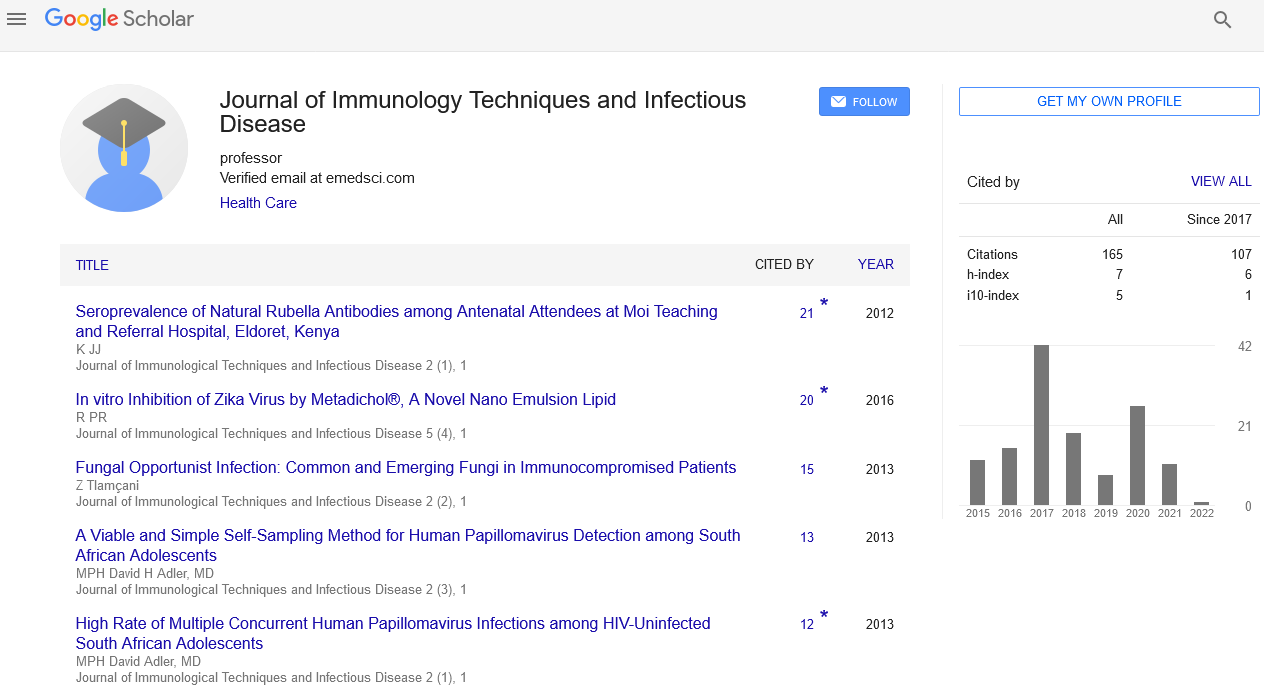Commentary, J Immunol Tech Infect Dis Vol: 13 Issue: 3
Ensuring Safety and Efficacy: Vaccine Testing and Regulation Processes
Koringa Mathakiya*
1Department of Immunology, Kamdhenu University, Gujarat, India
*Corresponding Author: Koringa Mathakiya,
Department of Immunology, Kamdhenu
University, Gujarat, India
E-mail: matha.korin@gmail.com
Received date: 26 August, 2024, Manuscript No. JIDIT-24-151953;
Editor assigned date: 28 August, 2024, PreQC No. JIDIT-24-151953 (PQ);
Reviewed date: 11 September, 2024, QC No. JIDIT-24-151953;
Revised date: 18 September, 2024, Manuscript No. JIDIT-24-151953 (R);
Published date: 25 September, 2024, DOI: 10.4172/2329-9541.1000392
Citation: Mathakiya K (2024) Ensuring Safety and Efficacy: Vaccine Testing and Regulation Processes. J Immunol Tech Infect Dis 13:3.
Description
Vaccines have transformed public health by preventing the spread of infectious diseases, saving millions of lives and reducing disease severity. Behind the availability of every vaccine is located in a rigorous process of testing and regulation designed to ensure its safety, efficacy and quality before it reaches the public.
Vaccine development phases
Vaccine development is a lengthy, complex process that can take years of study and testing. It involves several phases, each with specific objectives aimed at evaluating the vaccine's safety, immune response and effectiveness. Here is an in-depth examination at every stage.
Preclinical testing: The vaccine development process begins with preclinical study in the laboratory, where scientists test a potential vaccine on cells and animals (usually mice or monkeys) to gauge its safety and ability to generate an immune response. Preclinical studies help to determine the right formulation, dose and delivery method, as well as identify any potential safety concerns before the vaccine is tested on humans. If the preclinical results demonstrate, the developers submit an Investigational New Drug (IND) application to regulatory agencies such as the U.S. Food and Drug Administration (FDA) or the European Medicines Agency (EMA), obtaining authorization to initiate clinical trials in humans.
Clinical trials: Once preclinical testing is complete and the vaccine is considered sufficiently secure for human trials, clinical testing begins.
Regulatory study and authorization: Following successful Phase III trials, the vaccine developer submits a Biologics License Application (BLA) to regulatory agencies such as the FDA or a similar submission to the EMA or the World Health Organization (WHO) for global distribution. This application includes comprehensive data from all clinical phases, demonstrating the vaccine’s safety, efficacy and manufacturing quality. The regulatory agency then conducts an in-depth study of the submitted data, which may take several months or even longer. During this period, the agency’s experts evaluate the vaccine's benefits vs potential risks; the manufacturing process may inspect the manufacturing facilities to ensure consistent quality and safety standards.
If the agency finds the vaccine to be safe and effective, it grants authorization, allowing the vaccine to be distributed and administered to the public. In emergencies, such as pandemics, regulatory agencies may issue an Emergency Use Authorization (EUA) to make the vaccine available more quickly based on the best available data, with ongoing studies to confirm efficacy and safety.
Challenges in vaccine testing and regulation
Despite the rigorous testing and regulation processes, vaccine development faces several challenges.
Speed vs safety: During pandemics, there is pressure to develop and deploy vaccines quickly. Balancing the need for speed with safety and thoroughness remains a significant challenge for instigators and regulatory agencies.
Vaccine hesitancy: Public concerns over vaccine safety, fueled by misinformation, can undermine vaccination programs. Clear communication from regulatory agencies about the safety, testing and authorization process is essential to build public trust.
Resource limitations: Developing, manufacturing and distributing vaccines require substantial resources. Ensuring equitable access, especially in low-income regions, remains a critical challenge despite international efforts to provide vaccines through programs including COVAX.
Variant strains: Emerging variants of pathogens can challenge existing vaccine’s efficacy. Regulatory agencies and developers must continuously evaluate whether vaccines provide protection against new variants or if modifications are necessary.
 Spanish
Spanish  Chinese
Chinese  Russian
Russian  German
German  French
French  Japanese
Japanese  Portuguese
Portuguese  Hindi
Hindi 
